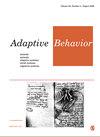A novel framework to classify opinion dynamics of mobile agents under the bounded confidence model
IF 1.3
4区 计算机科学
Q4 COMPUTER SCIENCE, ARTIFICIAL INTELLIGENCE
引用次数: 0
Abstract
The formation and evolution of public opinion have been widely studied to understand how consensus forms due to atomic interactions between individuals. While many studies have paid attention to modelling influence and interaction, most of the literature assumes static agents, ignoring the frequent changes in physical locations expected in real life. This feature naturally allows humans to interact with diverse people and avoid disagreement, which heavily impacts the co-evolution of opinions, communities or isolation in human societies. Our previous work proposed an extension of the bounded confidence model inspired by the theories of homophily and cognitive dissonance, which concern humans’ natural behaviours of attraction and disagreement. Although this demonstrated a marked difference to a static opinion model and purely random mobility, the limited experiments gave little insight into the causes or the resulting structures of consensus. This article addresses these shortcomings through a thorough investigation of the impact of mobility modelled by different mechanisms. Through extensive simulation, we observe a transition from multiple stable opinion clusters to complete consensus and a shift from a geographically based organisation to isolated structure-less agents. Lastly, we propose a novel classification of the different outcomes of self-organisation in opinion models, highlighting the patterns of emerging behaviours across the spectrum of interaction range and influence parameters.基于有界置信模型的移动智能体意见动态分类新框架
公众舆论的形成和演变已经被广泛研究,以了解个体之间的原子相互作用是如何形成共识的。虽然许多研究都关注建模影响和相互作用,但大多数文献都假设了静态代理,忽略了现实生活中预期的物理位置的频繁变化。这一特征自然允许人类与不同的人互动,避免分歧,这严重影响了人类社会中意见、社区或孤立的共同进化。我们之前的工作提出了受同源性和认知失调理论启发的有限置信模型的扩展,这些理论涉及人类的自然吸引和不同意行为。尽管这表明了与静态意见模型和纯随机流动性的显著差异,但有限的实验几乎没有深入了解共识的原因或由此产生的结构。本文通过对不同机制建模的流动性影响的彻底调查,解决了这些缺点。通过广泛的模拟,我们观察到从多个稳定的意见集群到完全共识的转变,以及从基于地理位置的组织到孤立的无结构代理的转变。最后,我们对意见模型中自我组织的不同结果提出了一种新的分类,强调了在互动范围和影响参数范围内出现的行为模式。
本文章由计算机程序翻译,如有差异,请以英文原文为准。
求助全文
约1分钟内获得全文
求助全文
来源期刊

Adaptive Behavior
工程技术-计算机:人工智能
CiteScore
4.30
自引率
18.80%
发文量
34
审稿时长
>12 weeks
期刊介绍:
_Adaptive Behavior_ publishes articles on adaptive behaviour in living organisms and autonomous artificial systems. The official journal of the _International Society of Adaptive Behavior_, _Adaptive Behavior_, addresses topics such as perception and motor control, embodied cognition, learning and evolution, neural mechanisms, artificial intelligence, behavioral sequences, motivation and emotion, characterization of environments, decision making, collective and social behavior, navigation, foraging, communication and signalling.
Print ISSN: 1059-7123
 求助内容:
求助内容: 应助结果提醒方式:
应助结果提醒方式:


